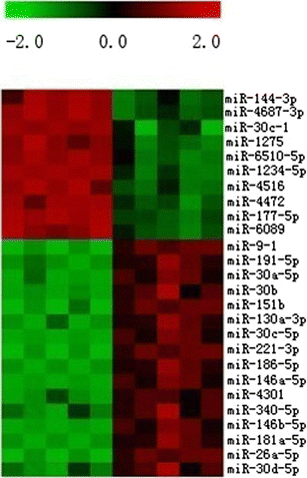Methylmalonic acidemia (MMA) is a metabolic disorder, which is caused by a deficiency of the mitochondrial enzyme methylmalonyl-CoA mutase. MMA diagnosis is dependent on the method of gas chromatography–mass spectrometry, which is expensive, complicated, and time consuming. Currently, microRNAs (miRNAs) have gained considerable interest for its function as a novel class of non-invasive and sensitive biomarkers for the diagnosis of diseases. Before a recent publication by researchers from Zhengzhou University, there has been no related report regarding its role in MMA. Through miRNA microarray services, their study first detected differentially expressed microRNAs in MMA and found that the expression of miR-9-1 was significantly down-regulated and changed sensitively after VitB12 treatment. They further confirmed that miR-9-1 was able to suppress neuronal apoptosis induced by methylmalonate. Taken together, their results suggest that miR-9-1 may act as a potential biomarker for the diagnosis and monitoring of changes in MMA and provide new insights into the pathogenesis of MMA.

Microarray assay. Twenty-six miRNAs showed differential expression by more than two-fold in MMA plasma using microarray assay
Related Service
miRNA Microarray Service – LC Sciences provides a microRNA (miRNA) expression profiling service using microarrays based on our in-house developed µParaflo® technology platform. We have standard arrays for all mature miRNAs of all species available in the latest version of the miRBase database (Release 21, July 2014). Our service is comprehensive and includes sample labeling, array hybridization, image data processing and in-depth data analysis. Two-three weeks after receiving your total RNA samples, we’ll send you both the raw and fully analyzed data. [Learn more…]
Reference
Yanfei Li, Tao Peng, Xiaohan Wang, Ranran Duan, Huili Gao, Wenjuan Guan, Junfang Teng, Yanjie Jia A Primary Study on Down-Regulated miR-9-1 and Its Biological Significances in Methylmalonic Acidemia (2013) Journal of Molecular Neuroscience. 53(2) 280-286 [article]
